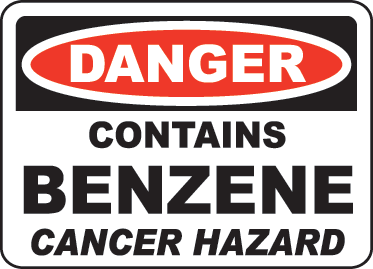These signs were all over open loose dirt plots abandoned by Haliburton. We the people get 12% of the royalties...I mean the federal government does. I feel sorry for haliburton having to pay the 2500 dollar fine for abandoning loose soil with cancer causing agent that were blowing around like crazy on this dry dusty Wyoming day. I bet they draw millions of gallons from that well. Seems to me, they are stinking rich, and can't even clean up their own mess. But they do have the $2500 dollar fine: )
Here is some recent info. on the subject from the NY Times:
Energy & Environment |NYT Now
Frack Quietly, Please: Sage Grouse Is Nesting
CASPER, Wyo. — In a new oil field among the rolling hills near here, Chesapeake Energy limits truck traffic to avoid disturbing the breeding and nesting of a finicky bird called the greater sage grouse. To the west, on a gas field near Yellowstone National Park, Shell Oil is sowing its own special seed mix to grow plants that nourish the birds and hide their chicks from predators.
And on a 320,000-acre ranch near the northern tail of the Sierra Madres, developers of an enormous wind farm have decided not to plant turbines where some of the best onshore winds in the world blow because it is in prime grouse territory.
The spotted owl never had it this good. But like that bird, which became a bitter symbol of the conflict between the environment and economic development a generation ago, the greater sage grouse — a chickenlike bird known for its flamboyant courtship strut — has seen its numbers plunge far and fast.
Now, federal officials are weighing putting it on the endangered species list — setting off a mad scramble among the unlikeliest of allies to save the bird and avoid disrupting the nation’s enormous growth in energy production. With a range stretching over more than 165 million resource-rich acres across 11 states, the grouse is at the center of one of the country’s most important struggles: to balance the demand for energy against the needs of nature. And in the process, it has put two environmental priorities — preserving species and fostering renewable energy — on a collision course.

“Remember the economic impact of the spotted owl and how much it reduced timber production on federal lands?” Representative Cory Gardner, Republican of Colorado, said in an interview. “The sage grouse has seven times the acreage of the spotted owl. You are looking at billions of dollars in lost economic activity, millions of dollars in lost state and local revenues and tens of thousands of jobs being lost.”
Environmentalists say the only way to save the grouse is to restrict use of the lands — whether for energy, housing, mining, ranching, hunting or recreation — which is exactly what an endangered species designation would do. Already, federal officials have delayed, altered or denied permits for more than two dozen energy projects in the West because of the bird.
“The sage grouse issue may finally put the brakes on the fossil-fuel industry in a way that no other factor has been able to,” said Erik Molvar, a wildlife biologist at WildEarth Guardians, an advocacy group.
That prospect has prompted an unusual collaboration among state and industry leaders to show federal wildlife officials, who have until September 2015 to decide on the endangered designation, how the bird can coexist with economic development. And federal officials, frequently at odds with one another over such matters in the past, are in on the act, overseeing an enormous effort among all the affected states to pre-empt the designation.
But that will not be easy.
Distribution of Greater Sage Grouse

CANADA
Current range
Historic range
WASHINGTON
Pacific
Ocean
MONTANA
N. DAKOTA
OREGON
IDAHO
S. DAKOTA
WYOMING
NEVADA
UTAH
COLORADO
CALIFORNIA
200 Miles
Once abundant in at least 13 Western states and three Canadian provinces, the greater sage grouse now covers 11 states — California, Colorado, Idaho, North and South Dakota, Montana, Nevada, Oregon, Utah, Washington and Wyoming. Federal wildlife officials say the bird’s numbers have declined as much as 80 percent over the last century, largely because of loss of habitat. Environmentalists estimate its population at 150,000 to 400,000, less the10 percent of its historical abundance.
Nowhere is the scramble more intense than in Wyoming, which claims more than a quarter of the remaining habitat and has a commitment to development of energy, which has boomed here. The sweeping valleys and wide-open ranchlands contain valuable resources including oil, natural gas, uranium, low-sulfur coal and wind, whose harnessing could all but stop if the grouse were listed as an endangered species.
Recognizing this, the state began writing a conservation plan six years ago that now serves as a model. But many environmentalists say Nevada, Utah and Colorado are still behind, and if even a few states lag, the greater sage grouse could go the way of other threatened species like spotted owls and piping plovers.
Gov. Matt Mead of Wyoming expressed frustration with that prospect, given his state’s preservation of 15 million acres of land at a cost of $32 million and millions of dollars more from the private sector. He suggested that a listing could jeopardize conservation efforts in the state.
“If you pull the rug from under us on this, what is going to be the incentive for Wyoming to continue to show leadership?” Mr. Mead said in an interview, referring to federal officials.



No comments:
Post a Comment